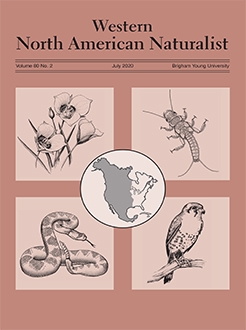Wiregrass (Ventenata dubia [Leers] Coss.), an annual grass from the Mediterranean region of North Africa and Eurasia that has aggressive invasion potential in many North American plant communities, has only recently been reported in low-elevation sagebrush steppe. We first encountered wiregrass in 2014 in the John Day Fossil Beds National Monument, a low-elevation steppe protected area in central Oregon. This discovery was incidental to formal vegetation monitoring that was initiated in the monument in 2009. We first encountered wiregrass in monitoring plots in 2016, and, from plot data, we documented rapid spread during 2017–2019. Wiregrass infestation increased within our 4674-ha monitored area from 21 ha (95% CI, 3 to 106 ha) in 2016 to 138 ha (95% CI, 31 to 265 ha) in 2018, and declined to 63 ha (95% CI, 13 to 119 ha) in 2019, representing a cumulative increase of 300% over the 4-year period. Variation in weather may explain this annual variation in wiregrass. We examined mean monthly water balance deficit during the autumn, winter, and spring preceding each survey year and found evidence of a potential correlation between winter deficit and wiregrass. The lowest winter deficit occurred in 2018 prior to the survey documenting the largest wiregrass increase. Wiregrass exhibited a broad ecological niche within our survey area, occurring across all surveyed elevations and on all but steep southern slopes. Invaded sites were in well-drained clay soils in association with other invasive annual grasses. Our observations contribute to the growing evidence that wiregrass poses a greater threat to low-elevation sagebrush ecosystems than previously recognized. It also illustrates the kinds of external stressors that are impacting sagebrush steppe protected areas and the need for continued early detection and rapid response measures, as well as long-term monitoring of invasions and response effectiveness.
How to translate text using browser tools
1 July 2020
Rapid Invasion by The Annual Grass Ventenata dubia into Protected-Area, Low-Elevation Sagebrush Steppe
Melissa Nicolli,
Thomas J. Rodhouse,
Devin S. Stucki,
Matthew Shinderman
ACCESS THE FULL ARTICLE

Western North American Naturalist
Vol. 80 • No. 2
July 2020
Vol. 80 • No. 2
July 2020





